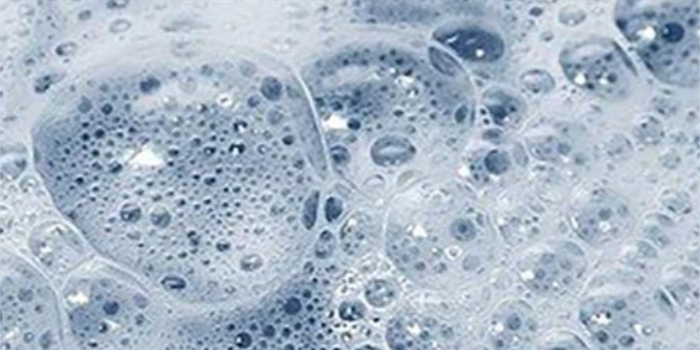
Surfactants: The biggest disrupter in textile industry in 2021
Textile surfactants play an important role in the textile industry as one of the chemicals to enhance the manufacturing process. According to Puneet Arora, surfactants present a great opportunity for textile players and organisations that make use of textiles for production.
In the world of fast fashion and ever evolving textile industry, it becomes imperative to not only keep up with the trends but to become a trendsetter. This makes it crucial to listen to the unstated requirements of the stakeholders involved and introduce solutions that add value to the textile being manufactured, given that we are now living in the age of pandemic. One of the latest technologies for innovation across industries is the deployment of surfactants to improve the texture, performance as well as boosting antimicrobial properties for any product especially during these pandemic times. The clothing/garment industry accounts for a significant market and is expected to be the fastest-growing segment in coming years. Several trends that are influencing the growth in the market are adoption of surfactants in textiles, migration towards sustainable textile printing practices using cleaner consumables such as urea and ecofriendly printing inks.
There is massive opportunity for growth in surfactants for all companies as their application across industries is varied and sustainable. The global surfactants market by revenue is expected to grow at a CAGR of over 4.80% during the period 2021-2026. Surfactants or wetting agents are organic compounds, which when added to water or any other liquid, reduces its surface tension, thereby causing the liquid to easily spread over the surface of a material or increase the ability of a liquid to penetrate into the material. In the textile industry, surfactants are used to achieve a variety of objectives, such as improving the finish/texture, smoothening, detangling, quick dryness, sweat absorption, as well as adding antibacterial and antimicrobial features to provide safety during the ongoing pandemic.
Textile surfactants can be manufactured from renewable raw materials such as natural oils, fatty acids, lignin, polyglycerol, sugar by-products and oleochemicals and petroleum products. Surfactants find applications as key ingredients in industrial and consumer cleaning substances, which include cleansing agents, emulsifiers, dispersants, foaming and defoaming agents. Surfactants are widely used in personal care products, in detergents, in paints and coatings, in agrochemicals, in metal works, in construction, in oil fields and other applications.
Apart from these, textile surfactants play an important role in the textile industry as one of the chemicals to enhance the manufacturing process. In industry, textile surfactants are used as antistatic, untangling and softening agents in different processes of textile manufacturing such as scouring, lubrication, dyeing and finishing. Textile surfactants contain both water loving (hydrophilic) and water hating (hydrophobic) parts. Based on the hydrophilic part, textile surfactants are segmented into anionic, cationic, non-ionic and amphoteric surfactants. Anionic surfactants such as carboxylates, sulphonates and alkyl ether phosphates are used as dye dispersants; cationic surfactants such as alkylamine ethoxylates and quaternary ammonium compounds are used for fabric softening; non-ionic surfactants such as ethoxylates, fatty acids ethoxylate, fatty alcohol ethoxylates and fatty amine ethoxylates are used as washing/dispersing agents, whereas amphoteric surfactants are applied in combination with cationic or anionic surfactants.
Increased spending, in terms of fashion and high-class interiors, has increased demand for textiles, as a result of which there is strong demand for textile surfactants in the industry. As there are many players in the textile industry, owing to continuous change in preferences of people, competition among them would constantly bring more advancement in textile quality and thus is expected to drive the market for textile surfactants in near future. Technical textile includes medical applications, geotextiles, agro-textiles, etc. Rising demand from these segments would stimulate the growth and demand of Indian textile, which ultimately would accelerate the textile surfactants demand in textile industries. Technical textiles are also used in environmental protection applications and such environmentally beneficial projects are expected to boost eco-tech textiles, which would keep demand for surfactants rising.
In the textile industry, surfactants are used for three main processes:
These are the major uses of surfactants in the textile industry that shed light on how surfactants play a very important role in the textile industry.
The main restraint, which may hamper the demand for use of textile surfactants, is government regulations for utilization of eco-friendly products. Disposal of synthetic surfactants into lakes and rivers leaves an adverse environmental impact, which limits the growth of synthetic textile surfactants market. This in-turn has raised the demand for bio-based textile surfactants, which will bring opportunities for market growth.
With growing economies and increasing population of developing countries of Asia Pacific and continuous demand for new trends in textile segment, this region leads the market of textile manufacturing, owing to which there is high demand for surfactants in textile sector. Also, India and China lie among top exporters of textiles, so manufacturers in this region are expected to witness significant rise in demand for surfactants.
Lastly, the significance of Ethoxylates, fatty alcohol ethoxylates, fatty acid ethoxylates and fatty amines ethoxylates in the textile industry cannot be underestimated. Without them, the textile industry cannot be complete as they improve efficiency. Surfactants present a great opportunity for textile players and organisations that make use of textiles for production and the focus on leveraging surfactants across products should be made paramount for any company’s operations.
CATEGORIES Sustainability



